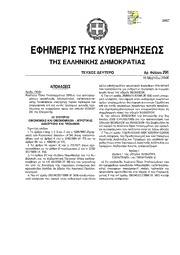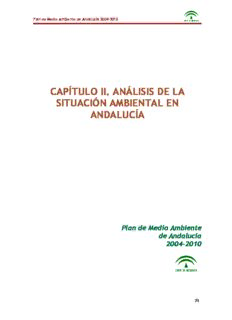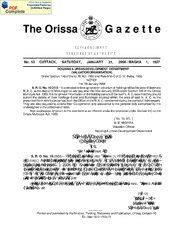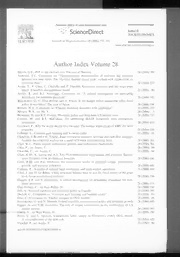
they had lived on namibian soil PDF
Preview they had lived on namibian soil
THEY HAD LIVED ON NAMIBIAN SOIL Windhoek Priory - Namibia THEY HAD LIVED ON NAMIBIAN SOIL By: Sr. Scholastica Kaliki, OSB and Sr. Mary Clemens Hamukoto, OSB Windhoek Priory - Namibia THEY HAD LIVED ON NAMIBIAN SOIL CONTENTS Preface ............................................................................................... v Introduction .........................................................................................vii 1. Sr. Anselma Schnitzbauer ............................................................... 1 2. Sr. Beatrix Biefel ............................................................................. 3 3. Sr. Constantia Mayr ........................................................................ 8 4. Sr. Franziska Mövenkamp............................................................. 10 5. Sr. Gabriela Reiter......................................................................... 13 6. Sr. Ingridis Meiller.......................................................................... 16 7. Sr. Relindis Bessinger ................................................................... 20 8. Sr. Sophia Ohnmacht ................................................................... 22 9. Sr. Adelinde Rohrmoser ................................................................ 25 10. Sr. Adeline Vogel ........................................................................ 27 11. Sr. Adula Stiegler ........................................................................ 28 12. Sr. Alypia Schröttke ..................................................................... 30 13. Sr. Amarina Ballweg .................................................................... 33 14. Sr. Anthusa Kindl ........................................................................ 34 15. Sr. Aurelia Haag ........................................................................... 36 16. Sr. Baptista Lyambayi ................................................................. 37 17. Sr. Bartholomäa Preiss ............................................................... 41 18. Sr. Berlindis Bittl ......................................................................... 44 19. Sr. Bernolda Riedl ....................................................................... 46 20. Sr. Berthild Leser ......................................................................... 52 21. Sr. Bonita Wohlmannstetter ........................................................ 55 22. Sr. Chrysantha Jakob .................................................................. 57 23. Sr. Dosithea Lechner .................................................................. 59 24. Sr. Eckharda Grammer ............................................................... 61 25. Sr. Edmunda Kienle .................................................................... 62 26. Sr. Ehrengardis Wehrmeister ...................................................... 64 27. Sr. Emidia Lohr ........................................................................... 69 28. Sr. Eremberta Schneider ............................................................ 71 29. Sr. Erwina Diet ............................................................................. 73 30. Sr. Ethelreda Lutz ........................................................................ 76 31. Sr. Florentine Wirthmann ............................................................. 77 32. Sr. Frankhilde Hilpert .................................................................. 80 33. Sr. Friederike Lohmüller ............................................................. 81 34. Sr. Gabriele Drees ...................................................................... 83 35. Sr. Genovefa Meyer .................................................................... 86 36. Sr. Germana Fisch ...................................................................... 87 37. Sr. Gerolda Leimgruber ............................................................... 88 38. Sr. Gerwina Herrmann ................................................................. 90 ii THEY HAD LIVED ON NAMIBIAN SOIL 39. Sr. Gisberta Gröbl ....................................................................... 92 40. Sr. Hadelina Mittermeier ............................................................. 94 41. Sr. Harwarda Fischer ................................................................... 97 42. Sr. Herifrieda Schwerd ................................................................ 99 43. Sr. Herigar Baudenbacher ........................................................ 100 44. Sr. Herluka Rohrmoser ............................................................. 102 45. Sr. Hermana Hebesberger ........................................................ 106 46. Sr. Hermine Gerhard ................................................................ 110 47. Sr. Herta Fischer ....................................................................... 113 48. Sr. Hertlinde Hüttmann ............................................................. 116 49. Sr. Hiltrudis Kindl ...................................................................... 119 50. Sr. Honorata Stocker ................................................................ 121 51. Sr. Ignatia Buggle ..................................................................... 123 52. Sr. Imma Löber ......................................................................... 126 53. Sr. Ingrid Schmitt ...................................................................... 129 54. Sr. Irene Tshavuka Nakale ........................................................ 131 55. Sr. Irmina Pauly ........................................................................ 133 56. Sr. Isberga Gruber .................................................................... 136 57. Sr. Jutta Hafner ......................................................................... 138 58. Sr. Katharina Lummel ............................................................... 139 59. Sr. Leopoldine Mühlbauer ......................................................... 142 60. Sr. Lintrud Kiermeier ................................................................. 146 61. Sr. Mansueta Mayer ................................................................. 152 62. Sr. Mildburg Merk ..................................................................... 155 63. Sr. Novata Bohner .................................................................... 157 64. Sr. Oswalda Clement ................................................................ 160 65. Sr. Peregrina Strein .................................................................. 162 66. Sr. Philippine Steinhauser ........................................................ 163 67. Sr. Pirmina Fleck ...................................................................... 165 68. Sr. Priska Fichtl ......................................................................... 167 69. Sr. Reginalda Weis ................................................................... 171 70. Sr. Regula Fuchs ...................................................................... 174 71. Sr. Reinharda Schwer ............................................................... 176 72. Sr. Rhabana Hausiku ................................................................ 179 73. Sr. Rhabana Stehle .................................................................. 182 74. Sr. Richmundis Kösel ............................................................... 184 75. Sr. Sigibalda Kraus ................................................................... 186 76. Sr. Solana Huber ...................................................................... 190 77. Sr. Suitberta Aberle ................................................................... 192 78. Sr. Sylvia Wagner ..................................................................... 195 79. Sr. Thaddäa Popp ..................................................................... 196 80. Sr. Theodula Mühlbauer ........................................................... 199 81. Sr. Udalrike Wiedemann ........................................................... 202 iii THEY HAD LIVED ON NAMIBIAN SOIL 82. Sr. Urbana Rauch ..................................................................... 207 83. Sr. Ursula Lülsdorff ................................................................... 208 84. Sr. Veremunda Fürst ................................................................. 211 85. Sr. Viatrix Weber ....................................................................... 212 86. Sr. Walburga Sauer .................................................................. 214 87. Sr. Wiborada Funk .................................................................... 217 88. Sr. Wighardis Weiss .................................................................. 218 89. Sr. Wilhelmine Josef ................................................................. 221 90. Sr. Zita Lutz .............................................................................. 223 Foundation Play .............................................................................. 226 Epilogue .......................................................................................... 235 List of Sisters according to Family Name ........................................ 237 List of Sisters according to Year of Death ....................................... 240 iv THEY HAD LIVED ON NAMIBIAN SOIL PREFACE As we memorialize our 90 years of humble beginning and development of the Windhoek Priory, it is our joy and gratitude to backtrack to the roots of those who paved the way for Benedictines in Namibia and for the Namibians; those who went before us, both in life and in death. Their footprints are left behind for young generations to follow, and this made them worthy of being called Namibians. The 90 Sisters in this anthology are meant to once again call us to look at what the Benedictine Sisters in the Windhoek Priory went through in the past 90 years since the frst Eight Sisters set foot on Namibian soil, and at what might need to be done as we look forward with zealous hearts to our Centennial in 2020. First, our sincere gratitude goes to Sister Marita HAARMANN, OSB, who gave us a go signal in this endeavour. Our thanks go to Sister Maria Ignatius GLASER, OSB, who permitted us to continue this simple but cherished project. Thanks to Sister Hildetrud KNOTH, OSB, and to Sister Patricia ALCAREZ, OSB: the archivists of Windhoek and Manila Priories respectively for providing us with the materials we needed for this try- out project. Thanks to Sister Theresia SHILONGO, OSB for interviewing some of the sisters in order to give us factual information. We likewise thank Sister Augusta KUNZ, OSB, for vigorously translating some of the obituaries from German to English, for proofreading and for writing the epilogue; apart from her busy work in the theatre of the Roman Catholic Hospital she found time for all these. We equally thank all the Sisters for their supports through prayers and comments and suggestions here and there in order to bring this work into fruition. The Priory of Windhoek from its cradle until the 90+ years of its existence has 114 deceased Missionary Benedictine Sisters of Tutzing who served with devotedness and/or are buried in the Namibian soil or died while belonging to Windhoek Priory. We selected only 90 Deceased Sisters, symbolizing the 90 Years Jubilee of our foundation in Namibia celebrated on 20 December 2010. The selection was based on whoever of whom we had the biography, autobiography or death notice during the writing period. Thus, it does not mean, that those selected are more important than those left out. Nevertheless, Book II of the remaining Sisters is coming, in which all those who had been missioned to Namibia for a longer period of time and had returned to their home countries or to other lands will be reminisced. Among these 90 selected Sisters, there are three sisters who belonged to other priories at the time of their death yet are included here because they are among the frst eight trailblazers of Windhoek Priory and could not be left unmentioned. v THEY HAD LIVED ON NAMIBIAN SOIL The authors’ dream was to come up with something signifcant about the Priory of Windhoek for the occasion of its 90 years of the Missionary Benedictine Sisters of Tutzing’s presence, witness and service in this land of Namibia. They wish to put something into black and white for reminding, informing and teaching, especially the coming generations. This work, though little, we frmly believe and are hopeful that after delving into the lives of each of these 90 Sisters, the readers are able to come into close contact with what it was all about in the beginning and development to what it is today. The eight pioneers are arranged alphabetically at the beginning followed by the 82 also alphabetically arranged. For those Sisters whose photos are not available we used the Congregation Jubilee logo. It is our hope that the lives of these 90 Sisters will bring about love for our Congregation and true identity of our Missionary Benedictine Charism. We hope too that this volume will broaden the horizons of us young missionaries, especially those living in Namibia, to render our services to other lands too as did the majority of those whose lives are told in these pages. To our Senior Sisters, we anticipate that they will be encouraged to try-out writing something about their life experience of living and serving before they leave us for HEAVEN, so that in all things, God may be gloried! Sister Scholastica Kaliki, OSB and Sister Mary Clemens Hamukoto, OSB Windhoek - Namibia Solemnity of the Nativity of St. John the Baptist 24 June 2012 vi THEY HAD LIVED ON NAMIBIAN SOIL INTRODUCTION “We have the light and yet we let millions of people stumble in the darkness…” said Father Andreas AMRHEIN, OSB; whose vision was to found a missionary congregation in order to educate not only boys and men, but also girls and women. According to Fr. Amrhein, such service to the women will only be realised if there is a congregation branch of women. He felt with St. Paul in his letter to the Romans “But how could they call upon the Lord without having believed in Him? And how could they believe in Him without having frst heard about Him? And how will they hear about Him if no one preaches about Him? And how will they preach Him if no one sends them?” (Rom. 10: 14 – 15). It is with this same spirit that the Missionary Benedictine Sisters of Tutzing responded to the call to foreign mission services in Namibia through healing and teaching ministry. The effect of the First World War led the Benedictines to Namibia after Tanzania was taken over by the British Authority and all the Germans regardless of religion were expelled from the country. Mission Houses were closed down or handed over to other congregations. Some Sisters were interned in Nankhunda camp in Malawi and later they were transferred to Tempe camp near Bloemfontein in South Africa. While in Nankhunda camp, the sisters “were able to live somewhat a normal 1 monastic life of prayer and work” but when they came to South Africa, 2 life changed. In a letter written by Sister Maura ZILKER OSB to Father Damian ARNOLD OMI, Sister Maura revealed what the sisters went through during their imprisonment. It read: “We are fourteen sisters here, coming from two stations in the Vicariate of Dar es Salam... For almost a year since 11 August, 1916 we have been moving from one place to another. From September 1916 to 22 January 1917, we were at a French mission station of the Marist Congregation near Zomba in British Nyasaland. Afterwards we spent three months in Pretoria and for the last three months we have been here in the camp together with forty German women and their eighty children. We are all-right as far as our material welfare is concerned, but our spiritual life is experiencing a real period of Lent. Things were better in Pretoria because Father de HOVRE used to come several times a week to celebrate Mass. He was also able to talk German. But there is only one priest here, Father O’Leary. He just cannot come to us all that often, as much as he wants to. We receive 1 From the Benedictnes of Inkamana by Godfrey SIEBER, OSB, page 310. 2 Sister Maura ZILKER, OSB was the superior of the sisters while they were prisoners of war and Father Damian Arnold, OMI was the Administrator of the Prefecture Apostolic of Windhoek at that tme. vii THEY HAD LIVED ON NAMIBIAN SOIL Holy Communion two or three times a week and we have Mass only once a month. The last confession was – seven weeks ago! We are not allowed to leave the camp, not even to go to church.” Coincidentally, the young church in Namibia was desperately in need of more personnel. Thus, the administrator of the prefecture went to the English authorities in Namibia to request the release of the sisters from Tempe camp. He, likewise, sent the sisters his frst invitation dated 23 July 1917 inviting them to come and do missionary work in his Prefecture Apostolic of Windhoek. Unfortunately, his request was rejected and the sisters had to remain in the camp. On 15 October 1918, another attempt to get the Tutzing Sisters from the Tempe camp was made by Dr. KOHLER, the Mayor of Windhoek due to the spreading of the Spanish Infuenza and the demands of nursing staff in the country. The Mayor, likewise, promised that the Catholic mission in Namibia will provide accommodation for the requested sisters. This attempt was also turned down and the sisters remained in the camp until 1919. Father Eugenius KLAEYLÉ, OMI the Prefect Apostolic of Lower 3 Cimbebasia and Father Damian ARNOLD, OMI - his representative, did not give up their search for Sisters’ congregation who could take over and continue the care for the sick and the education of the young. At that time there was only one female Congregation in Namibia, the 4 Franciscan Sisters of Heythuisen who originated from Nonnenwerth, Germany. These sisters were being recalled by their Superior to return to their homeland. As a consequence, Father Damian wrote a letter to Bishop Maximilian von LINGG of Augsburg, Germany, on 08 January 1920 to request the missionary sisters. On 24 February, 1920, Bishop Maximilian von LINGG replied Father Damian from Germany telling him that the Prioress, Mother Birgitta KORFF, OSB, of the Benedictine Sisters of in Tutzing, who work for the Missions, was willing to send some Sisters. The bishop concluded his letter invoking God’s blessing upon this enterprise. On 07 November, 1920, the frst Sisters able to travel to Africa after the First World War and the last ones to be sent out by Mother Birgitta 3 The Archdiocese of Windhoek was known as Prefecture Apostolic of Cimbebasia Inferiore afer it was erected on 01 August 1892. Father Charles Eugenius KLAEYLÉ, OMI was appointed its frst Prefect Apostolic in 1892 to 1921. He died on 29 March 1941. R.I.P. 4 The Franciscan Sisters had to leave the hospital because they were posted in the country only to fulfl a contract in the Private Military Hospital that was begun in 1907, later called ‘Maria Stern Hospital’ by the Franciscan Sisters, then ‘Hospital of Our Lady of Perpetual Help’ by the Missionary Benedictne Sisters of Tutzing or ‘Maria-Hilf’ Krankenhaus, then fnally The Roman Catholic Hospital as is it known today or simply RCH. viii THEY HAD LIVED ON NAMIBIAN SOIL 5 KORFF, OSB as Prioress General were announced. On 11 November 6 1920, the journey of the frst eight sisters to South West Africa began. They embarked in Hamburg on the “Baltika”, the frst German steamer 7 that would cast anchor in Namibia. They docked at Walvis Bay in the Atlantic Ocean on 20 December 1920 and began their “Service that 8 Saves and Heals” and that of touching lives through teaching and instructing. Taking in mind the vision-mission of the founder, the sisters wanted to be among the blacks who were not yet Christians rather than among the whites who already had a background of Christian traditions. The Eight Sisters were met at the harbour in Walvis Bay by Father Damian ARNOLD, OMI and Father ZIEGENFUSS, OMI and they proceeded to Swakopmund immediately. The Franciscan Sisters offered them a place to stay and showed them around. Two days before Christmas they left for Windhoek. With the exception of Sister Ingridis MEILLER, OSB, to seven of them, this was not their frst African experience, since they had already been in Tanzania, East Africa until the First World War broke out and they were ordered to leave Tanzania. The chronicler of the prefecture of Windhoek recorded thus: “A rare Christmas gift which meant great joy for us came to us this year from Christ Child – the long desired missionary Sisters…” Since many mission stations awaited their service, already in January of 1921, four by four they went to their respective mission stations. Sister Anselma SCHNITZBAUER, OSB, Sister Beatrix BIEFEL, OSB, Sister Franziska MÖVENKAMP, OSB, and Sister Sophia OHNMACHT, OSB went to Gobabis - the heart of the cattle farming land in eastern Namibia, while Sister Constantia MAYR, OSB, Sister Relindis BESSINGER, OSB, Sister Ingridis MEILLER, OSB and Sister Gabriela REITER, OSB went to Epukiro. In Windhoek, some friendly Europeans lent them a car for the 200 kilometres journey to Gobabis on gravel road, which was a luxury compared to the jungle and the ox-wagon trip they would use for travelling to the North of the country. Each group of sisters was introduced to their new Stations by Father Damian ARNOLD, OMI. However, their 5 She was the First Prioress General of the Missionary Benedictne Sisters of Tutzing for 25 years, from 1895 to 1920. From 24 September 1885, foundaton day and year, the founder Father Andreas Amrhein, OSB lead the congregaton together with that of the Missionary Benedictnes of St. Otlien that was founded a year before on 29 June 1884. Father Amrhein was superior General untl his resignaton in 1895. 6 Untl 21 March 1990 Independence Day of Namibia from South Africa, Namibia was called South West Africa, the name was taken from the geographical locaton. 7 Walvis Bay or Walvisbaai in Afrikaans is a harbour town in Namibia. The name means a ‘Whales Bay’. The bay has been a haven for sea vessels because of its natural deep-water. 8 Sister Doctor Bernita WALTER, OSB, Service that Saves and Heals, p58. ix
The list of books you might like

$100m Offers

Do Epic Shit

The Strength In Our Scars

Corrupt (Devil's Night #1)

Rédiger un texte académique en français

BY ORDER OF THE COMMANDER FAIRCHILD AIR FORCE BASE AIR FORCE INSTRUCTION 21 ...

COMESA 261: Textiles - Natural fibres - Generic names and definitions

Die Acht vom großen Fluß II. Die unheimliche Vogelinsel. ( Ab 10 J.)

Greek Government Gazette: Part 2, 2006 no. 291

Kickin' It (Red Card)

The Brooklyn Paper Volume 29 Issue 48

DTIC ADA483967: Who's in Charge? New Challenges in Homeland Defense and Homeland Security

Graduate Bulletin 2006-2007, LaGrange College, LaGrange, Georgia

capítulo ii. análisis de la situación ambiental en andalucía

ERIC EJ744021: Investigating Functions Using Real-World Data

ERIC ED362564: Program Assessment: A Six-Step Process to Curriculum Improvement.

Odisha Gazette, 2006-01-07, No. 53

Greek Government Gazette: Part 4, 2006 no. 57

Números e funções reais

The New Jettison Policy for the International Space Station

Journal of Macroeconomics 2006: Vol 28 Index

Another World is Possible


